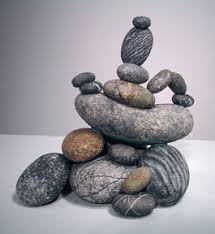Review: 500 Teapots: Contemporary Explorations of a Timeless Design (Edited by Suzanne Tourtillott)
 I love teapots and have a small collection of them. So, when I saw 500 Teapots, I decided that it would be fun to see the variations on a theme that potters would come up with.
I love teapots and have a small collection of them. So, when I saw 500 Teapots, I decided that it would be fun to see the variations on a theme that potters would come up with.
Let’s get my biases up front. I love it when form and function come together and the object is not only beautiful, but actually useful. All the teapots that I have, I use. Some more than others and some days I’ll pull something out of the back of the cupboard because that pot is just what I need on this particular day. My favorite lately is a crackled celery green ceramic pot — it make one big mug of tea and yet looks delicate and soothing. I also have several YiXing teapots with one of my favorites being a dragon — then there’s the rugged Brown Betty. I also have a few, very few, modern teapots I’ve picked up at crafts faires. What attracts me is utility and then something that just speaks to me and I know that I and that teapot will enjoy each others company.
 Leafing through 500 Teapots, I found teapots of breath-taking beauty, some that made me laugh out loud, some that made me think, hmmmmm. There were also some that were just teapots with different finishes and colors, some with spirals, flowers, birds, shells.
Leafing through 500 Teapots, I found teapots of breath-taking beauty, some that made me laugh out loud, some that made me think, hmmmmm. There were also some that were just teapots with different finishes and colors, some with spirals, flowers, birds, shells.
 There were also many teapots that are a teapot in name only. Either they wouldn’t hold water, or wouldn’t make very good tea — due to the shape and where the water would be versus where the spout was. To my mind, these aren’t teapots; they are works of art for display only. Something to be enjoyed for the artistry, the whimsy, or the metaphor the piece is trying to embody. Form but little function, beauty with no utility. A teapot has a function and without the function, is it really a teapot anymore?
There were also many teapots that are a teapot in name only. Either they wouldn’t hold water, or wouldn’t make very good tea — due to the shape and where the water would be versus where the spout was. To my mind, these aren’t teapots; they are works of art for display only. Something to be enjoyed for the artistry, the whimsy, or the metaphor the piece is trying to embody. Form but little function, beauty with no utility. A teapot has a function and without the function, is it really a teapot anymore?
Nevertheless, the book is a feast for the eyes. There’s ideas aplenty for those who work with these materials. For those who just enjoy looking at beautiful works, this fills that need. There is much to enjoy for its beauty, its whimsy, and what it says about hearth, home, life, and the universe.
Some of the photos, as well as including the artist’s name, name of the piece, information about materials and how it was made, also include a paragraph or two about what the artist’s intent was in making this particular pot. It’s the information about intent and inspiration that I found added to the appreciation of the piece.
So, if you enjoy a good cuppa once in a while and would like to see just how far one can go when working with function to make it stand-out, take a look at 500 Teapots.




